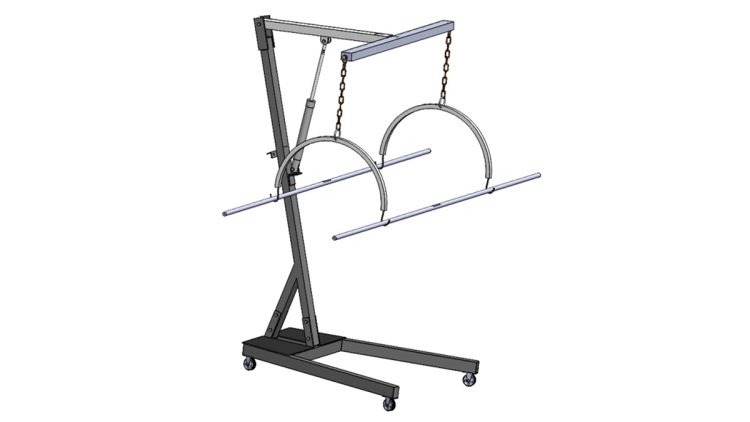The Covid-19 pandemic has brought immense challenges for healthcare systems around the world, with healthcare patients facing immense pressure to provide adequate care for patients while navigating unprecedented risks. One of the most significant challenges of this aspect is caring for unconscious patients. Providing quality care to such patients becomes a daunting task as they require constant monitoring and repositioning to avoid complications like pressure ulcers. But what if there was a solution that could make this job easier and much safer for both patients and caregivers? Enter the smart bedding system – A game-changing technology designed by a team of innovative researchers that promises to revolutionize unconscious patient care. Several features have been introduced in the presented system like weight measurement, lateral turning, and transfer bedding capabilities, making this innovative system capable of transforming unconscious patient care.
With the integration of several sensors and controllers into the bedding system, it can measure a patient’s weight, repositions them laterally and transfers them from a bed to a stretcher and vice versa as shown in Figure 1. The proposed methodology includes analyzing different sensors, developing 3D CAD assembly, selecting materials, fabrication, creating electrical design, integration and testing the developed system.

Initially, the researchers identified requirements of the smart bedding system, this included the ability to accurately measure the weight of the patient, detect patient’s position, and control their lateral turning. To achieve this, sensors and controllers have been incorporated along with mechanical components as shown in Figure 2.

For the purpose of weight measurement, the researchers selected a load cell sensor, as shown in Figure 3. Integrated into a bed frame, the sensors have been designed to support the patient and provide a stable base for weight measurement.

To detect patient position, the researchers utilized an accelerometer sensor. The accelerometer has been integrated into the lateral tuning module, to detect a patient’s position and control their lateral turning. Additionally, an infrared sensor has been integrated to ensure that the patient did not develop pressure ulcers due to prolonged lying in just one position. The support bars for lateral turning with detailed dimension is shown in Figure 4.

After selection of the sensors, controllers and mechanical components, the researchers developed a prototype smart bedding system, comprising a bed frame, a lateral turning module, and a transferring module as shown in Figure 5. The stretcher assembly consisting of rods, fabric is shown in Figure 5. The prototype has been tested and validated to make sure that it is safe and effective for use with unconscious patients.

The parts of the presented system have been assembled to develop the final CAD assembly, as shown below in Figure 6.

To effectively test the presented system, data is collected based on weight measurement accuracy, patient position detection and lateral turning control. The collected data was used to analyze and assess the system’s performance. The results showed that the smart bedding system was able to accurately measure a patient’s weight with a maximum error of 1.2%. Additionally, the lateral turning module was able to detect the patient’s position with an accuracy of 94%. The transfer module was also able to successfully transfer the patient from bed to stretcher or a wheelchair reducing risk of patient’s injury. Figure 7 demonstrates the working of the presented system.

The system not only reduces risk of pressure ulcers, but also improves patient comfort and lessens workload to caregivers. On top of it, it has the potential to be used in other care settings too! With this innovative solution, caregivers can focus on other important tasks and not worry about a patient’s sleep being compromised. Overall, the smart bedding system is a win-win solution that has the potential to revolutionize patient care. Future research could explore the use of the system in other care settings and investigate the potential for further improvements to the system’s design and functionality.
In conclusion, the smart bedding system is a game-changing technology that promises to revolutionize unconscious patient care. By integrating several sensors and controllers into the bedding system, it has the potential to transform patient care and improve patient outcomes. This innovative solution not only reduces the risk of pressure ulcers but also improves patient comfort and reduces the workload of caregivers. It’s time to embrace this new era of patient care and make a difference in the world.
Reference:
Shafi, I., Farooq, M. S., De La Torre Díez, I., Breñosa, J., Espinosa, J. C. M., & Ashraf, I. (2022, October). Design and Development of Smart Weight Measurement, Lateral Turning and Transfer Bedding for Unconscious Patients in Pandemics. In Healthcare (Vol. 10, No. 11, p. 2174). MDPI. DOI: 10.3390/healthcare10112174.
The author is Professor and Director Academics at College of Electrical and Mechanical Engineering, National University of Sciences and Technology (NUST). He can be reached at imranshafi@ceme.nust.edu.pk.
Research Profile: https://bit.ly/3nEykpn

![]()






